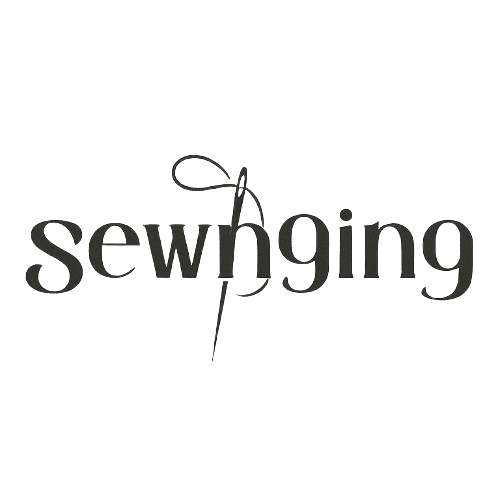Are you a sewing enthusiast looking to perfect your craft? Whether you’re a beginner or an experienced seamstress, having the right tools can make all the difference in achieving flawless hand-sewn creations. From needles and thread to thimbles and scissors, we’ve compiled a comprehensive list of the best tools for hand sewing that will take your stitching skills to new heights. Join us as we explore these must-have essentials and discover how they can revolutionize your needlework journey!
Introduction to Hand Sewing
When you think of hand sewing, you might envision your grandmother sitting in her rocking chair with a needle and thread. But hand sewing is a useful skill for anyone to have! Whether you’re mending a tear or hemming a pair of pants, hand sewing can come in handy.
If you’re new to hand sewing, don’t worry – it’s not as difficult as it looks. In this article, we’ll give you a crash course in hand sewing, including the best tools to use. By the end, you’ll be ready to tackle any hand-sewing project that comes your way.
Types of Needles for Hand Sewing
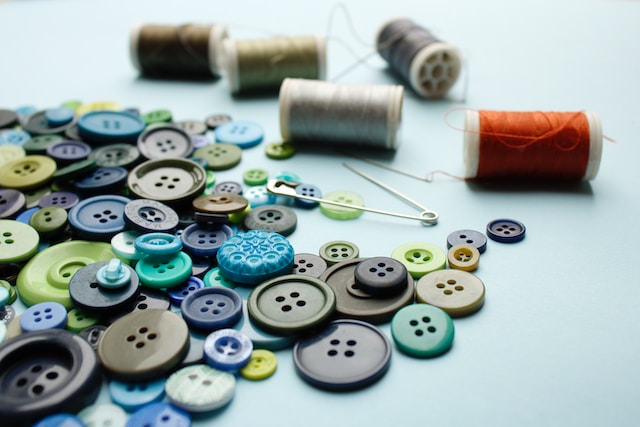
There are a few different types of needles you can use for hand sewing, and the best one for you will depend on the project you’re working on.
For general hand sewing, a sharp needle is best. You can use either a straight or curved needle, depending on your preference. If you’re working with thicker fabrics, you may want to use a larger needle.
For finer fabrics or detailed work, you’ll want to use a smaller needle. A sharp needle is still best, but you may want to use a curved needle to help prevent poking holes in the fabric.
If you’re working with delicate fabrics or thread, consider using a needle with a blunt end. This will help prevent snagging and tearing of the fabric.
No matter what type of needle you choose, be sure to select one that’s appropriate for the type of fabric you’re working with. Using the wrong type of needle can damage both your fabric and your sewing machine.
Threads and Embroidery Floss for Hand Sewing
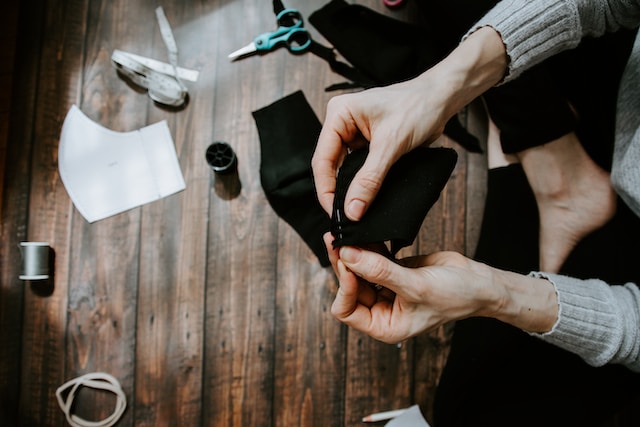
When it comes to hand sewing, there are a few things you’ll need in order to get started. Obviously, you’ll need a needle and some thread. But what kind of needle and thread should you use?
There are many different types of needles available for hand sewing, but the most common type is the sharp needle. Sharp needles have a pointy tip that is good for piercing through the fabric. They come in various sizes, so you can choose the size that is best for the project you’re working on.
As for thread, the most common type of thread used in hand sewing is cotton thread. Cotton thread is strong and durable, making it ideal for stitching together fabric. It also comes in a variety of colors, so you can choose the color that best matches your project.
If you’re looking for something a little more decorative, you can also use embroidery floss. Embroidery floss is made of multiple strands of thread twisted together, making it thicker than regular thread. It comes in many different colors and can be used to add a touch of decoration to your project.
Thimbles and Finger Guards for Hand Sewing
There are a few key tools that are essential for hand sewing – needles, thread, fabric scissors, and thimbles or finger guards. Thimbles or finger guards are important to protect your fingers from needle pricks while you’re sewing. They also help to push the needle through the fabric more easily. There are a variety of different thimbles and finger guards available on the market, so it’s important to choose one that is comfortable for you to use.
Seam Rippers and Snips for Hand Sewing
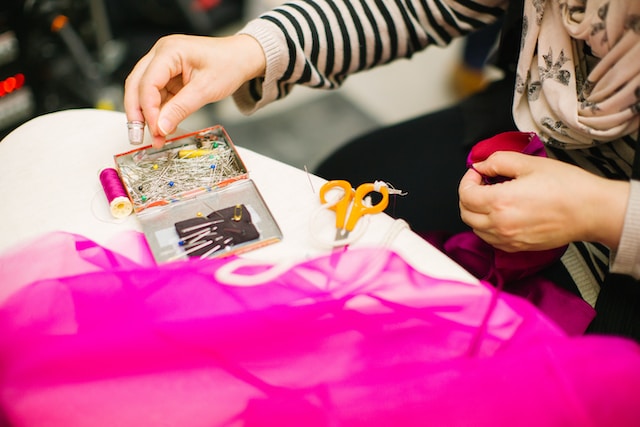
There are a few different types of seam rippers and snips that can be used for hand sewing. The most common type of seam ripper is the pointed seam ripper. This type of seam ripper has a sharp point that is used to pierce through stitches. The other type of seam ripper is the rotary cutter. This type of seam ripper has a rotating blade that cuts through stitches.
Snips are also a type of hand-sewing tool that can be used to cut threads. There are two types of snips: the straight snip and the curved snip. Straight snips are used to cut straight lines, while curved snips are used to cut curved lines.
Markers and Templates for Hand Sewing
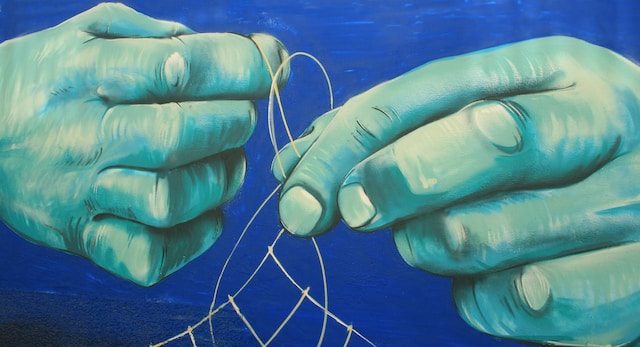
There are a few different types of markers and templates that can be used for hand sewing. The most common type of marker is the tracing wheel. This is a small, handheld tool that is used to trace patterns onto fabric. Trace wheels come in different sizes, so it is important to choose one that is the right size for the project you are working on.
Another type of marker is the chalk pencil. These pencils are made specifically for marking fabric and come in a variety of colors. Chalk pencils are great for marking lines that need to be sewn in a straight line, such as hemlines or seamlines.
Templates can also be used for hand-sewing projects. Templates are usually made out of cardstock or thin plastic and can be reused multiple times. They are perfect for tracing shapes onto fabric and can be used to create appliques or embroidery designs.
Needle Threaders and Awls for Hand Sewing

Needle threaders and awls are two of the most essential tools for hand sewing. A needle threader helps to quickly and easily thread a needle, while an awl is used to make holes in fabric for stitching.
Needle threaders come in a variety of shapes and sizes, but they all serve the same purpose – to help you thread your needle quickly and easily. There are two main types of needle threaders: those with a wire loop and those with a small hook. Wire loop needle threaders are the most common type and are very easy to use. Simply insert the wire loop into the eye of the needle and then thread your yarn or thread through the loop. Hook type needle threaders are slightly more difficult to use, but they can be helpful if you have difficulty seeing the eye of the needle.
Awls are another essential tool for hand sewing. An awl is a pointed tool that is used to make holes in fabric. This is necessary when starting a stitch or when attaching buttons or other fasteners. Awls come in a variety of sizes, so be sure to choose one that is appropriate for the size of hole you need to make.
Scissors and Pins for Hand Sewing

When it comes to hand sewing, having the right scissors and pins can make all the difference. Scissors that are too big or too small can be difficult to maneuver, and pins that are too thin can bend or break easily.
For scissors, look for a pair that is comfortable to hold and that has a sharp blade. Pins should be strong and of a suitable size for the fabric you are working with.
When choosing a needle, consider the type of fabric you will be sewing. A needle that is too thin can cause the fabric to fray, while a needle that is too thick can make it difficult to sew a tight seam. Choose a needle size that is best for the thickness of the fabric.
The thread also plays an important role in hand sewing. A thread that is too thick can be difficult to work with, while a thread that is too thin can break easily. Choose a thread size that is appropriate for the type of fabric you are working with.
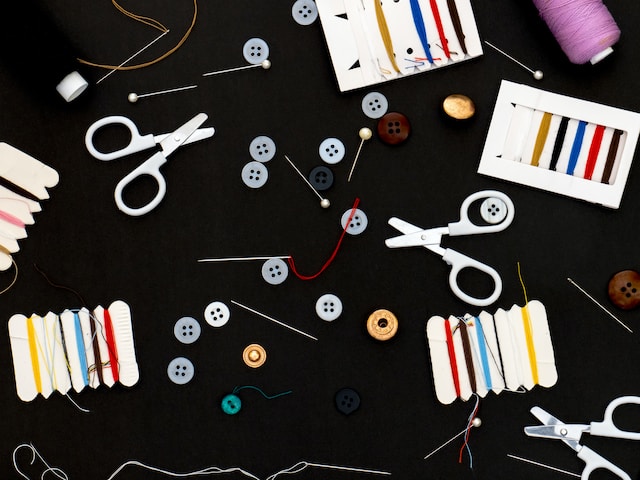
Conclusion
Hand sewing is a skill that requires proper tools and equipment to be successful. With the right supplies, hand sewing can become an enjoyable and rewarding craft. We hope this article has provided information about hand stitching so that you can easily tackle your next project. From fabric scissors to thimbles and needles, having these items on hand will make it much easier to get started on any new project!
